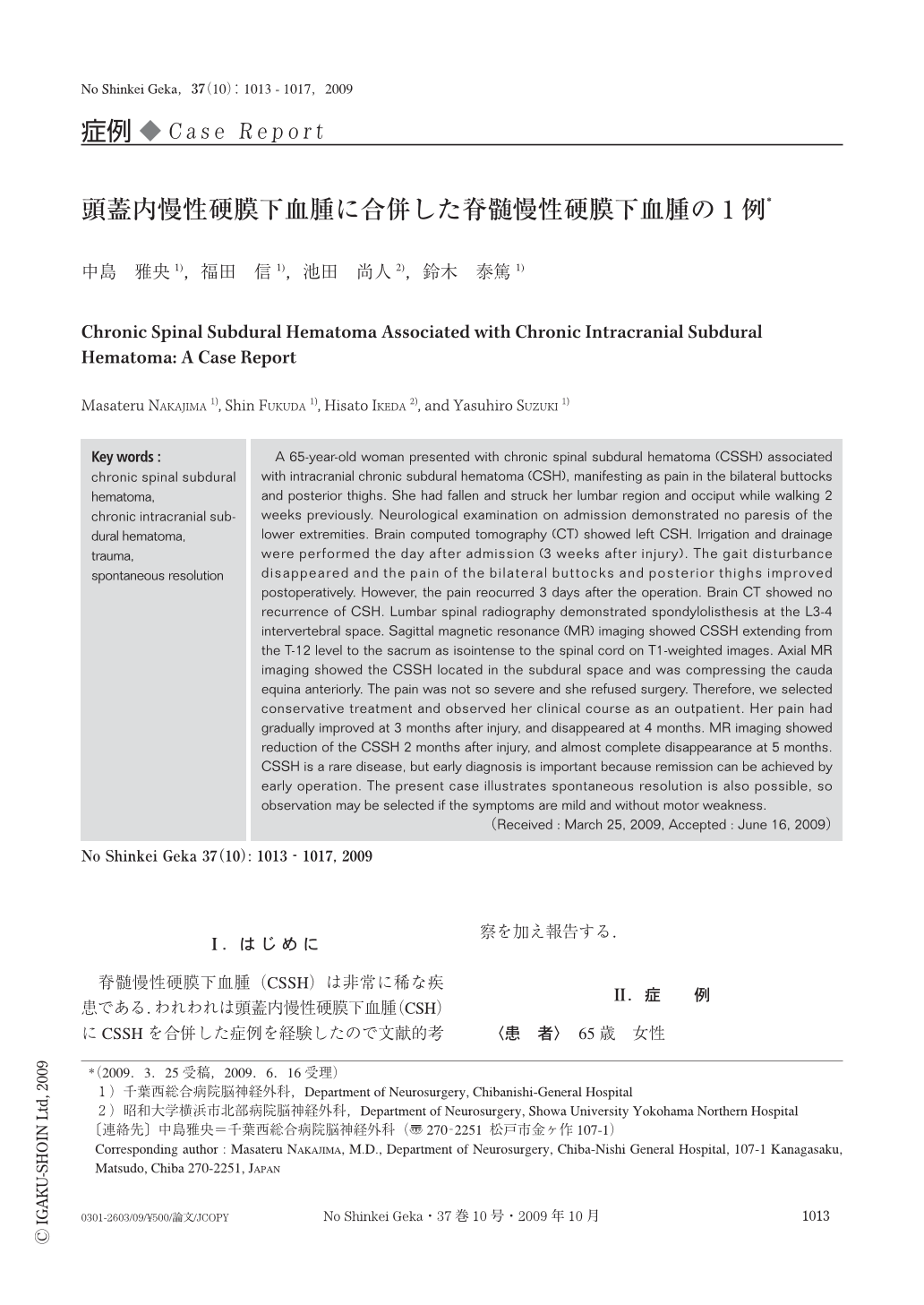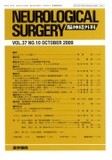Japanese
English
- 有料閲覧
- Abstract 文献概要
- 1ページ目 Look Inside
- 参考文献 Reference
Ⅰ.はじめに
脊髄慢性硬膜下血腫(CSSH)は非常に稀な疾患である.われわれは頭蓋内慢性硬膜下血腫(CSH)にCSSHを合併した症例を経験したので文献的考察を加え報告する.
A 65-year-old woman presented with chronic spinal subdural hematoma (CSSH) associated with intracranial chronic subdural hematoma (CSH), manifesting as pain in the bilateral buttocks and posterior thighs. She had fallen and struck her lumbar region and occiput while walking 2 weeks previously. Neurological examination on admission demonstrated no paresis of the lower extremities. Brain computed tomography (CT) showed left CSH. Irrigation and drainage were performed the day after admission (3 weeks after injury). The gait disturbance disappeared and the pain of the bilateral buttocks and posterior thighs improved postoperatively. However, the pain reocurred 3 days after the operation. Brain CT showed no recurrence of CSH. Lumbar spinal radiography demonstrated spondylolisthesis at the L3-4 intervertebral space. Sagittal magnetic resonance (MR) imaging showed CSSH extending from the T-12 level to the sacrum as isointense to the spinal cord on T1-weighted images. Axial MR imaging showed the CSSH located in the subdural space and was compressing the cauda equina anteriorly. The pain was not so severe and she refused surgery. Therefore, we selected conservative treatment and observed her clinical course as an outpatient. Her pain had gradually improved at 3 months after injury, and disappeared at 4 months. MR imaging showed reduction of the CSSH 2 months after injury, and almost complete disappearance at 5 months. CSSH is a rare disease, but early diagnosis is important because remission can be achieved by early operation. The present case illustrates spontaneous resolution is also possible, so observation may be selected if the symptoms are mild and without motor weakness.

Copyright © 2009, Igaku-Shoin Ltd. All rights reserved.


